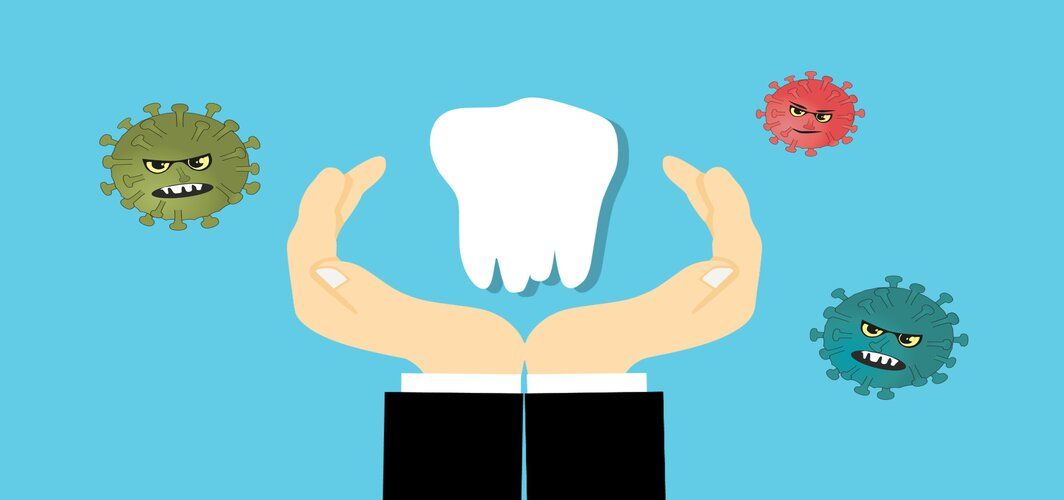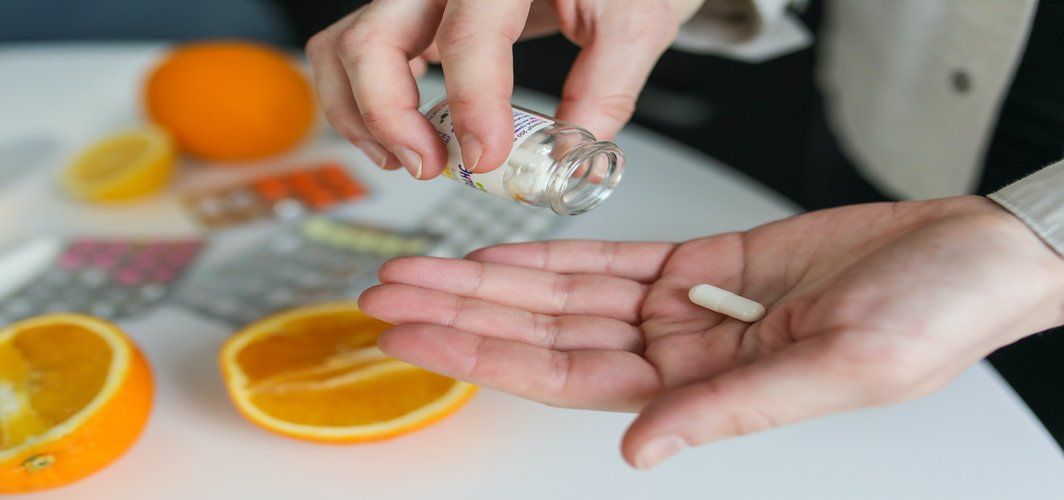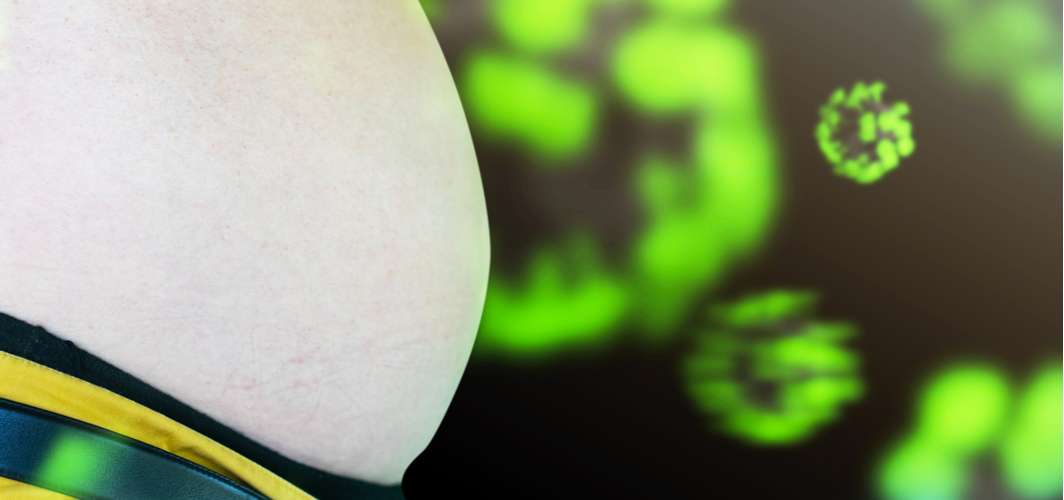Coronavirus Updates
How Can Dental Problems Be Managed During COVID-19?
5 min read
By Apollo 24/7, Published on - 16 September 2020, Updated on - 18 October 2022
Share this article
1
17 likes

While doctors around the world are helping patients battle the COVID-19 pandemic, treatments for other health conditions seem to have taken a backseat. Dental health is one of them, and dentists are facing significant challenges in continuing to provide the necessary oral care. Several public health organizations have stated that the risk of contracting a Coronavirus infection is significantly higher in a dental setting, and have also provided guidance on how to reduce this risk and manage dental concerns during COVID-19.
Risk of contracting COVID-19 in a dental setting
In dental settings, asymptomatic and minimally symptomatic patients may spread COVID-19 infection to others through their saliva, which is rich in Coronavirus load. This means that it can infect others who come in contact with the saliva, e.g., through dental tools or other items in the clinic. Additionally, a majority of the dental procedures require close contact with the patient’s oral cavity and respiratory tract fluid secretions, which also are the primary sources of the spread of the novel Coronavirus infection.
According to the interim guidance on oral health services released by the World Health Organization (WHO), the risk of airborne transmission of Coronavirus during “Aerosol generating procedure” (AGPs) was marked as a high-risk dental procedure. These include water/air spray generating equipment, root canal treatment, teeth polishing, cementation of tooth’s crown, surgical tooth extraction and dental implant fixation. Such procedures result in the production of airborne particles (less than 5 μm in size) which remain in the air and can travel over a short distance. These aerosols can carry Coronavirus and may cause infection if they are inhaled. Also, it is hard to practice physical distancing between the dentist and the patient during an examination or procedure. Hence, it is advised that patients visit a dental clinic only for emergency procedures.
Do you require emergency help?
According to guidelines issued by most governments as well as public health organizations, it is important to recognize what constitutes a dental emergency and what does not. The American Dental Association (ADA) has provided a ready reckoner for this:
Dental emergencies: According to the ADA, these are ‘potentially life-threatening and require immediate treatment to stop ongoing tissue bleeding [or to] alleviate severe pain or infection’. Examples include uncontrolled gum or dental bleeding, bacterial infections with oral swelling that compromises the airway, or trauma involving facial bones.
Urgent dental care: These are situations that require immediate attention to relieve severe pain and/or risk of infection. Examples include severe dental pain due to inflammation of the pulp, tooth fracture, third-molar pain, post-operative inflammation of the bone, bacterial infection with localized pain/swelling, dental treatment required prior to critical medical procedures, crown/bridge cementation and a few others.
Non-emergency dental procedures: These include routine dental examinations, periodic cleaning, aesthetic procedures or regular check-ups.
It is always advisable to have a teleconsultation with your dentist in the first instance, who will use their expertise and professional judgement to conclude whether a patient requires emergency or urgent medical support.
Latest guidelines for carrying out dental procedures in India
- Dental clinics will remain closed in the containment zones. Oral health professionals can only provide online dental teleconsultation in those areas.
- Urgent procedures should be undertaken only after an online consultation, tele-triage, consent, and through appointments only.
- Practice of non-aerosol generating procedures (AGPs) should be encouraged in a dental setting for emergencies.
- All administrative staff and incoming patients in the dental setting should be trained on physical distancing, hand hygiene, cough etiquettes and use of facemask.
- For disinfection of the dental setting, 1% sodium hypochlorite with a minimum contact time of 10 min is recommended for floor mopping. On the other hand, for disinfecting the dental and other electronic equipment, alcohol-based rub or spirit (containing min 60%-90% ethyl alcohol) should be used. Disinfection should be done daily and after carrying out every dental procedure.
The complete list of guidelines can be found here.
Managing dental health during COVID-19
Given the inherent risks associated with visiting a dental clinic, here are some tips to maintain oral health so that your need for getting a dental procedure or visiting a clinic is significantly reduced or eliminated:
- The American Dental Association (ADA) recommends brushing teeth twice a day with fluoride toothpaste for 2 minutes. This helps to remove the remains of food particles and dental plaque (a sticky white film that forms on the teeth and can contain bacteria). On the other hand, mouthwash can help to fight bad breath and keep the oral infection in check.
- Rinsing the mouth with 0.2% povidone-iodine or 1% hydrogen peroxide solution is known to reduce the salivary microbial load in the mouth.
- Keep your dental kit (toothbrush, toothpaste, floss, etc) in hygienic conditions, and disinfect them regularly.
- Eat healthy and avoid foods that are sugary, processed, of low nutrient value and those likely to cause excess acidity. Foods that are teeth and gum friendly and contain nutrients like calcium and magnesium may be beneficial. Also avoid certain foods like hard nuts or chewy dried fruits that may cause tooth damage, especially if your teeth are fragile.
- People affected with diabetes need to take extra precautions to avoid the build-up of plaque, which are remains of foods that contain a high level of sugar or starch (carbohydrate), causing tooth cavities, bad breath and gum diseases. This can result in periodontitis (gum disease/infection) which could result in tooth loss.
Conclusion
Coronavirus Updates
Leave Comment
Recommended for you

Coronavirus Updates
Can a COVID-19 Self-test Detect the Omicron Variant?
COVID-19 self-test kits can detect infection, irrespective of the variant. The article explores the effectiveness of COVID-19 self-test kits in detecting the Omicron variant.

Coronavirus Updates
Is It a Good Idea to Take Health Supplements to Fight the Coronavirus?
While health supplements do have their benefits and can boost your immune system, it is important to talk to the doctor before consuming them.

Coronavirus Updates
Does Obesity Cause Severe COVID-19 Complications?
Recent research has revealed that obesity-related conditions can cause significant complications in COVID-19 infected people.
Subscribe
Sign up for our free Health Library Daily Newsletter
Get doctor-approved health tips, news, and more.
Visual Stories

Covid-19 Updates: Are Things Getting Brighter?
Tap to continue exploring
Recommended for you

Coronavirus Updates
Can a COVID-19 Self-test Detect the Omicron Variant?
COVID-19 self-test kits can detect infection, irrespective of the variant. The article explores the effectiveness of COVID-19 self-test kits in detecting the Omicron variant.

Coronavirus Updates
Is It a Good Idea to Take Health Supplements to Fight the Coronavirus?
While health supplements do have their benefits and can boost your immune system, it is important to talk to the doctor before consuming them.

Coronavirus Updates
Does Obesity Cause Severe COVID-19 Complications?
Recent research has revealed that obesity-related conditions can cause significant complications in COVID-19 infected people.